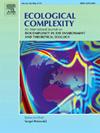Enhancing maximum sustainable yield in a patchy prey–predator environment
IF 3.1
3区 环境科学与生态学
Q2 ECOLOGY
引用次数: 0
Abstract
In this paper, we investigate a prey–predator community of fish coexisting in a multi-patches model, where different fishing patches are interconnected through migration terms. Only the predator is caught, while the prey grows logistically on each patch. The main objective of our research is to compare the maximum sustainable yield achieved in two contrasting scenarios: unconnected patches and connected patches with rapid stock movements. We show that the total maximum sustainable yield for the connected patches can be greater than the sum of the maximum sustainable yield on each isolated patch. The analysis of the model allows us to establish the conditions under which one of the two cases is more favorable from the viewpoint of yield. As a result, we provide a complete classification for all possible cases. This valuable information can be used to assist decision-makers in selecting the best management strategy for a particular fishery.
在猎物与食肉动物混杂的环境中提高最大持续产量
在本文中,我们研究了一个在多斑块模型中共存的鱼类捕食者群落,在这个模型中,不同的捕鱼斑块通过洄游条件相互连接。只有捕食者会被捕获,而猎物则在每个渔场上顺理成章地生长。我们研究的主要目的是比较在两种截然不同的情况下实现的最大持续产量:未连接的斑块和种群快速移动的连接斑块。我们的研究表明,连接斑块的总最大持续产量可能大于每个孤立斑块的最大持续产量之和。通过对模型的分析,我们可以确定在哪些条件下,从产量的角度来看这两种情况中的哪一种更有利。因此,我们提供了所有可能情况的完整分类。这些宝贵的信息可用于帮助决策者为特定渔业选择最佳管理策略。
本文章由计算机程序翻译,如有差异,请以英文原文为准。
求助全文
约1分钟内获得全文
求助全文
来源期刊

Ecological Complexity
环境科学-生态学
CiteScore
7.10
自引率
0.00%
发文量
24
审稿时长
3 months
期刊介绍:
Ecological Complexity is an international journal devoted to the publication of high quality, peer-reviewed articles on all aspects of biocomplexity in the environment, theoretical ecology, and special issues on topics of current interest. The scope of the journal is wide and interdisciplinary with an integrated and quantitative approach. The journal particularly encourages submission of papers that integrate natural and social processes at appropriately broad spatio-temporal scales.
Ecological Complexity will publish research into the following areas:
• All aspects of biocomplexity in the environment and theoretical ecology
• Ecosystems and biospheres as complex adaptive systems
• Self-organization of spatially extended ecosystems
• Emergent properties and structures of complex ecosystems
• Ecological pattern formation in space and time
• The role of biophysical constraints and evolutionary attractors on species assemblages
• Ecological scaling (scale invariance, scale covariance and across scale dynamics), allometry, and hierarchy theory
• Ecological topology and networks
• Studies towards an ecology of complex systems
• Complex systems approaches for the study of dynamic human-environment interactions
• Using knowledge of nonlinear phenomena to better guide policy development for adaptation strategies and mitigation to environmental change
• New tools and methods for studying ecological complexity
 求助内容:
求助内容: 应助结果提醒方式:
应助结果提醒方式:


